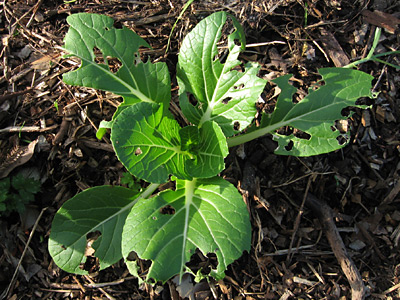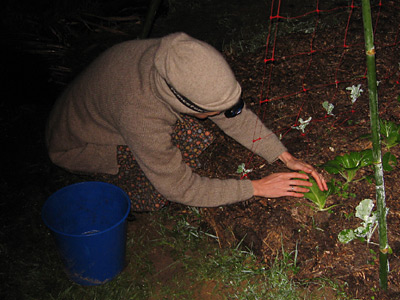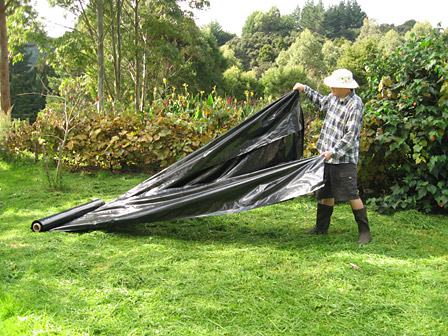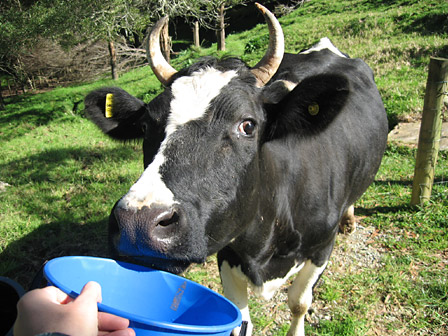The warm, rainy conditions we are having are ideal for our newly planted seedlings. Alas, these conditions are also perfect for slugs. . . and they are oozing their slimy bodies over to our gardens as fast as they can to feast on the tender young plants. We like to share our food, and wouldn’t begrudge them a few mouthfuls, but their collective intent seems to be fixed on total annihilation of all our kale and bok choi seedlings. This we cannot tolerate, so we are mustering all our resources to find a solution that does not involve slug bait or other toxic chemicals.

Our first line of defense is beer traps. Since Kevin has been brewing beer at home, we have plenty of dregs left over from the bottom of each batch. I’ve been burying plastic containers up to their rims in the garden, and then filling them with left-over beer. The slugs slither in for a taste of beer, and never come out again. This method has been somewhat successful. Slugs are certainly going into the beer traps in large numbers, but there are still more of them on the plants.The second solution we’ve tried goes as follows: Late at night, I don my combat gear — wooly hat and cardigan, head lamp, and trusty gumboots. Arming myself with a bucket of hot soapy water, I head for the garden to pick slugs off our plants. At first I thought I might keep a tally of how many slugs I vanquished on these forays, but I quickly lost count. This method is certainly quite effective. At the moment, it’s probably the only thing stopping our bok choi plants from being eaten to the ground. It’s pretty labour-intensive though, and as our garden gets bigger, I start to wonder if I will have to stay out there all night.

What else can we do? I’ve heard that if you eat half a grapefruit and leave the peel upside-down on the lawn, slugs will crawl under it and can then be disposed of. We plan to try this. We also want to get hold of some copper to make slug barriers for some of the most sensitive plants. Copper is on the shopping list for our next trip to town.
Slugs aside, we are really happy with how things are going in the garden. Today we made the first of several bamboo frames for our peas to climb up. I’m already dreaming of having fresh sugarsnap peas in our lunchtime salads! We were pleased with the first pea frame, but Kevin thinks the design is somewhat flawed, and that we are unlikely ever to have peas in our salad. He suspects that without the addition of barbed wire or an electric fence, he’ll have gobbled up all the sugarsnap peas before they make it to the lunch table.










